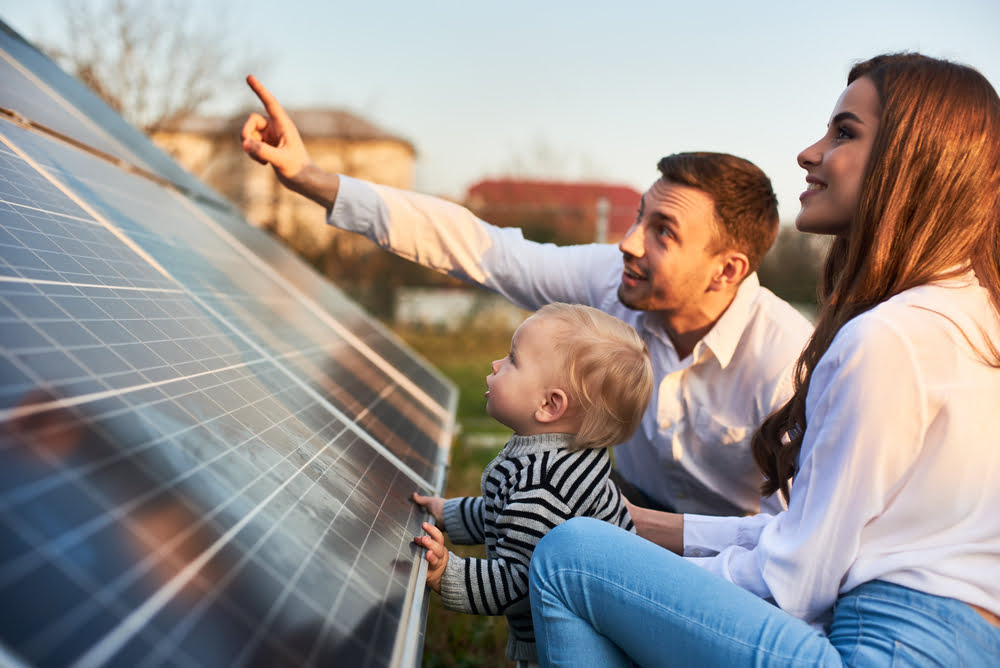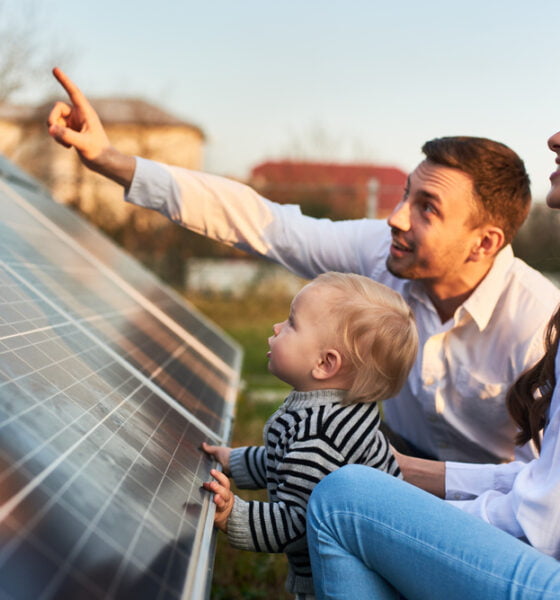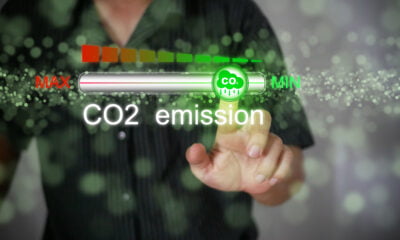

Energy
Renewable Energy for Households: Types, Benefits, And More
Renewable energy derives from inexhaustible natural resources, such as sunlight, wind, water, and plants. These sources are naturally replenished and thus don’t run out. For instance, the sun keeps shining, and the wind never stops blowing. Notably, renewables are becoming a vital power source that most households use because they’re readily available and are a cheaper alternative to non-renewable sources in the long run.
Also, renewable energy benefits the environment by creating far fewer emissions than fossil fuels, which produce large volumes of harmful greenhouse gases like carbon dioxide when burned. So, aside from saving on long-term costs, you’re also helping preserve the environment by using renewable energy systems.
Here are the types, benefits, and more:
Types Of Renewable Energy For Households
Below are the types of renewable energy sources for households:
1. Solar Energy
Solar energy is the sun’s radiation capable of generating electricity. Notably, sunlight is the most powerful and abundant energy source the Earth receives. This energy can be collected locally using rooftop solar panels and converted into electrical energy to power homes. The following are the main applications of solar energy at home:
- Electricity: Electricity can be generated from solar energy through photovoltaic (PV) solar cells. It’s an energy conversion device made of semiconductors and converts photons of sunlight into electrons. The solar-powered electricity can be used for home lighting and power appliances such as televisions, home theaters, and laptops. The amount of solar energy produced depends on the number of solar panels used to collect sunlight. Therefore, it’s best to install the panels on a spacious roof for maximum exposure and to enable the generation of adequate solar electricity to power your entire home.
- Water Heating: The main components of a solar water heating system include a solar collector to collect solar energy, an insulated tank for storing hot water, and connecting pipes. A black absorbing surface inside the collector absorbs sunlight and converts it into heat energy. It then transfers the heat to the water flowing through the circulating pumps. The heated water is stored in an insulated tank to prevent heat loss and later used for various purposes such as bathing, washing, or cleaning.
- Air Conditioning: Solar-powered air conditioners (AC) can cool your living spaces during the hot season to ensure comfort. A solar AC unit can collect solar energy through solar thermal or photovoltaic systems. PV systems generate electricity through photovoltaic cells. On the other hand, solar thermal systems function the same as solar water heaters but utilize heated water in an air conditioning system.
- Water Pumping: It involves using power generated by solar energy to pump water for irrigation. It’s ideal during the hot summer months when there is increased solar radiation.
- Space Heating: Solar energy can be utilized for space heating. So, when your indoor space requires heat, it’s transferred from the solar collectors to various rooms through ducts, radiators, air outlets, or hot air registers.
- Cooking: A solar cooker is a type of solar thermal collector made of an insulated metal blackened from the inside. When the solar box is exposed to the sun, solar energy penetrates the glass covers and is absorbed by the blackened surface. It results in high temperatures inside the solar box. You can then place cooking pots blackened from the outside and containing uncooked food inside the box. The food gets cooked using the heat energy generated due to increased temperatures.
Fortunately, solar energy costs significantly less than fossil fuel alternatives. Different factors, including the size of your solar system and the installation conditions, determine the cost of solar. Typically, solar panels cost between USD$3,000 and USD$4,000 per kilowatt. On the other hand, the average solar installation cost is USD$3,300 per kilowatt, and the average solar system size is about five kilowatts.
2. Wind Energy
Wind turbines can convert the power of the wind into electricity. The system consists of propeller-like blades, a nacelle, and a shaft. Wind or breeze turns the blades around a rotor connected to the main shaft, which spins a generator to create electricity.
While wind turbines are commonly used for commercial and industrial projects, you can still install a small wind turbine outside your household to power your home. However, you should assess whether a small wind electric system will function in your area. Some of the aspects to look at include the following:
- The amount of wind at your location: It’s crucial to check how windy your area can get to get the most out of your wind turbine. For example, if you live in higher altitudes, your wind turbine will have greater access to prevailing winds. If not, it may not be a wise option.
- The zoning requirements in your area: The standards and laws for permitting the installation of small wind turbines differ based on applications and geographical regions. Therefore, you’d want to consult your local county officials to understand the zoning requirements.
- The ideal spot to install the system: You should install the wind turbine on the windy side of your property without obstacles such as trees, sheds, or houses.
- The correct size turbine to acquire: Small wind turbines for residential applications usually vary in size, starting from 400 watts to 20 kilowatts.
- The system’s estimated energy output: Estimating the annual energy production from a wind turbine is the ideal way to determine if it will generate enough power for use. A professional installer can assist with this.
Essentially, the energy generated depends on various factors, such as the average annual wind speeds in your area, the height of the tower you intend to use, and the frequency distribution of wind. If the wind turbines produce enough energy to meet all your needs, it may reduce your reliance on the electric grid.
3. Bioenergy
Bioenergy is a type of renewable energy produced from the burning of biomass. Biomass is an organic material derived from plants and animal waste, including harvest residues, waste wood, trees, microalgae, and purpose-grown grasses. For small-scale use, biomass usually takes the form of wood chips, food wastes, or wood pellets. It’s a vital renewable energy source that households use mainly for cooking and heating. Biomass is converted into heat energy through direct combustion.
Below are two ways to use biomass heating systems at home:
- Stand-alone stove: Burns wood pellets or logs to heat a room. Also, it can be connected to a back boiler for water heating. Stoves can produce 6 to 12 Kilowatts in energy output.
- Boiler: Burns wood chips, pellets, or logs to power central heating and hot water systems. A wood-fueled biomass boiler can generate more than 15 Kilowatts of energy.
Luckily, energy production from biomass is a carbon-neutral process. The carbon dioxide released from biomass when combusted is balanced by that absorbed by the plants while growing through photosynthesis.
4. Geothermal Energy
Geothermal energy is derived from inside the Earth. Mainly, geothermal heating and cooling is a form of geothermal energy that can be harnessed for domestic use. It generates power based on the difference between the outside air temperature and the temperature at least four feet underground.
The temperatures deep down the Earth remain mostly constant at 50 to 55 degrees Fahrenheit. Therefore, a geothermal heating and cooling system transfers the heat underground to your household during the cold season. And in summer, it transmits the excess heat from the indoor spaces into the ground to cool your home.
However, note that renewable energy systems can sometimes be unreliable. They rely on natural resources like sunlight, wind, and water, whose availability may be affected by the weather and time. For example, solar panels may not function optimally at night and during cloudy days, and wind turbines lose efficiency during calm weather. Additionally, hydropower solutions require consistent rainfall. Therefore, the energy supply may be unpredictable.
Benefits Of Renewable Energy
Here are the benefits of using renewable energy:
1. It Is a Cheaper Form Of Energy Supply
Generating energy from natural resources can significantly lower energy costs as you don’t have to buy power from the national grid. Ideally, natural resources like the sun and wind are free and readily available. You may incur investment costs, for instance, for the materials and installation, but the system will pay for itself in the long run through reduced utility bills.
2. It Generates Zero Carbon Emissions
Unlike fossil fuels, renewable energy sources generate little or no greenhouse gas emissions, reducing air pollution. Therefore, increasing the supply of renewable energy in the household can significantly reduce your carbon footprint and thus less global warming emissions.
3. It Is Inexhaustible
Renewable energy cannot be depleted as it’s derived from naturally replenished sources. Also, with renewables, energy becomes domestic, giving you more control over energy usage.
4. It Is Better For Our Health
Burning fossil fuels releases high volumes of carbon dioxide and nitrous oxide directly into the atmosphere contaminating the air and water. Therefore, it may cause various health issues such as breathing problems, throat irritation, reduced lung function, cancer, neurological damage, and airway inflammation. Fortunately, renewable energy sources don’t release air pollution emissions contributing to cleaner air and water.
5. It Is A Reliable Source Of Power At Remote Locations
Renewable energy sources such as solar provide energy opportunities to remote areas where power lines may not exist.
Conclusion
Renewable energy is a vital fuel supply that never runs out. It has diversified the energy supply and reduced the dependence on non-renewable sources like fossil fuels that are harmful to the environment. Therefore, you’d want to consider renewable options such as solar, geothermal, wind, and bioenergy as your primary energy source.




























